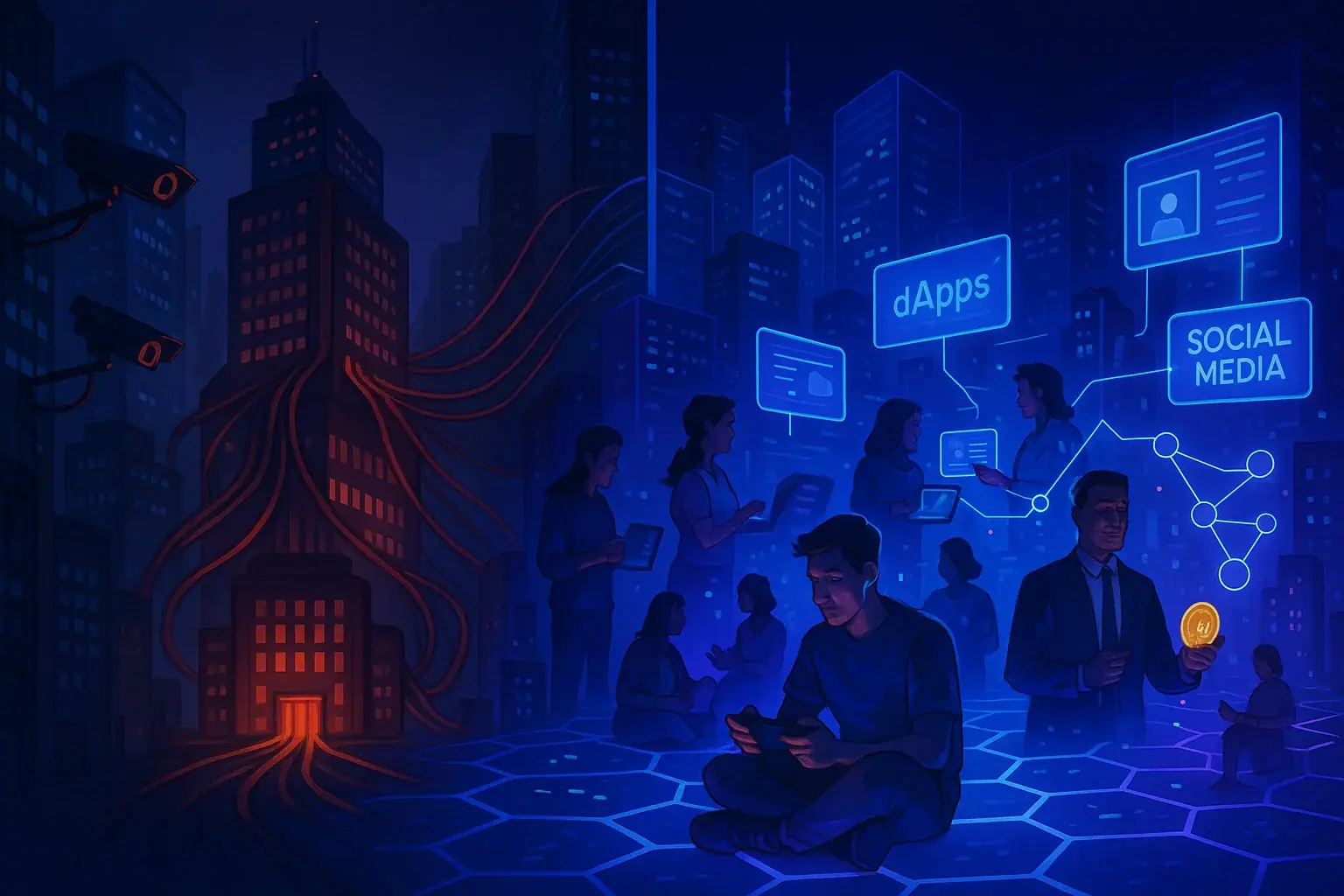The concept of crypto token burning has emerged as a crucial strategy for managing the supply and demand of crypto assets. This process has the ability to significantly influence the value and dynamics of cryptocurrencies. Token burning involves "burning" (removing from circulation) a given cryptocurrency in order to reduce the amount circulating, thereby decreasing supply and stimulating demand, possibly leading to higher prices.
In this article in Spaziocrypto's Web3 Guide, we will explore the phenomenon of token burning in detail, analysing its definition, underlying motivations, implementation methods and effects on the cryptocurrency market. Through a critical appraisal of the associated challenges and criticisms, we will attempt to provide a comprehensive perspective on how this process fits into the broader landscape of cryptocurrency management strategies.
What is Token Burning?
Crypto token burning is a process by which a certain number oftokens or digital coins are permanently removed from circulation. This can be done in various ways, such as physically destroying the keys to access the funds or sending the cryptocurrencies to an address with no known private key, thus rendering the funds unrecoverable. The origins of this practice date back to the early years of cryptocurrencies, when the developers and communities involved started looking for ways to manage the supply of their digital currencies more effectively. The main goal of crypto burning is to influence the supply and demand of the cryptocurrencies involved. By deliberately reducing the supply, one aims to create a scarcity effect, which could lead to an increase in demand and, consequently, an increase in value for investors.
Motivations Behind Token Burning
Now, let's explore the main motivations behind this practice and its impact on the cryptocurrency ecosystem.
- Supply Reduction: One of the main motivations behind burning is to reduce the supply of cryptocurrencies in circulation. Deliberately reducing the number of cryptocurrencies available on the market creates a scarcity effect that may increase the perceived value of the remaining cryptocurrencies. This can lead to increased demand from investors, potentially benefiting the price of the cryptocurrencies involved.
- Increasing Value: Burning, as a result, is often seen as a strategy to increase the value of the cryptocurrencies involved. By reducing the supply in circulation, an expectation of scarcity is created which could lead to an increase in demand and, consequently, an increase in price. This can be particularly beneficial for projects wishing to improve investor confidence and the long-term sustainability of their token.
- Incentives for Investors:
- Crypto token burning can also be used as an incentive for investors. Some projects burn a percentage of their revenue or transactions to reward investors, thus reducing the overall supply and increasing the value of tokens held by existing investors. This can encourage participation in the network and promote positive investor behaviour.
- Managing the Token Economy:
- Finally, burning can be seen as part of a broader strategy of managing tokenomics. By burning some of the cryptocurrencies in circulation, projects can regulate supply more accurately, adapting it to market needs and maintaining a balance between supply and demand. This can help maintain the stability and sustainability of the project in the long run.
Methods for Implementing Token Burning
In the previous chapter, we examined the motivations behind crypto token burning. Now, we will delve into the different methods through which this practice can be implemented in blockchain projects.
Burning of Unsold Tokens
One of the most common methods to implement this mechanism is to burn unsold tokens. This can occur at the end of an initial token sale (ICO) or following a specific planned event. Unsold tokens are then irreversibly destroyed, reducing the overall supply in the market.
Burning-a-percentage-of-transactions
Another strategy consists of burning a percentage of the transactions made on the network. For example, a cryptocurrency project might adopt a policy where a small percentage of transaction fees are burnt on a regular basis. This process can incentivise the use of the cryptocurrency and reduce the overall supply over time.
Buy back and burning programmes
Some projects implement buy-back-and-burn programmes, in which they use part of their profits to buy back tokens on the market via buy-back and subsequently burn them. This process not only reduces the overall supply of tokens, but can also increase the value for existing investors.
Burning Under Predetermined Conditions
In some cases, burning occurs on the basis of predetermined conditions or specific events. For example, a project might establish an automatic burning programme in which a certain number of tokens are burned each time a predetermined goal is reached, such as reaching a certain market capitalisation or completing a specific time period.
Burning-for-Ecological-or-Governance-Relations
Some projects may also adopt this method for ecological or governance reasons. By burning a portion of the tokens in circulation, the environmental impact of mining operations is reduced and the distribution of decision-making power in the network is improved.
Criticisms and Challenges of Burning
Despite the potential benefits, token burning is not without its criticisms and challenges. We will examine some of the main concerns and criticisms associated with this practice, as well as the challenges that cryptocurrency projects may face in implementing this method.
Concerns About Centralisation and Control
One of the main criticisms of burning relates to the risk of centralisation and control of cryptocurrencies by developers or platform operators. As the token burning process is often managed by a central authority, some may be concerned that this could undermine the decentralised nature of cryptocurrencies and concentrate power in the hands of a few actors.
Collateral Effects on the Market
Some experts have expressed concern about the side effects that token burning could have on the cryptocurrency market. For example, excessive use of this method could create a false perception of excessive value, leading to a price correction or instability in the market.
Challenges-in-efficiency-assessment
Evaluating the effectiveness of this approach can be difficult, as its effects on the value of cryptocurrencies may depend on a number of factors, including market demand, investor perception and project governance decisions. This challenge makes it difficult to determine whether burning is indeed an effective supply management strategy in the long term.
Tackling these criticisms and challenges is essential to ensure that burning can be implemented responsibly and sustainably in the cryptocurrency context.
Legal and Ethical Considerations
Regulation:It is important to consider the regulatory context in which crypto token burning takes place. Regulators may have different views on this practice, and there may be legal implications to consider, especially regarding the distribution and price manipulation of cryptocurrencies.
Transparency:Burning practices should be transparent and well documented. Users who have invested in the cryptocurrency should be clearly informed about when and how burning takes place, so that they can properly assess the effects on the valuation of the cryptocurrencies involved.
Fairness and Governance: Decisions regarding burning should be made fairly and transparently, taking into account the interests of all parties involved. Project governance should ensure that these practices are aligned with the goals and interests of the community as a whole.
Environmental Considerations: Finally, it is important to consider environmental impacts, especially in the case of projects that use intensive mining methods. Burning practices should be evaluated in a way that minimises the impact on the environment and promotes long-term sustainable solutions.
Integrating these legal and ethical considerations, we can gain a more complete understanding of the context in which burning occurs and its implications for the Decentralised Finance (DeFi) ecosystem and society as a whole.
Conclusions and future perspectives on Crypto Token Burning
After examining the various dimensions of burning in the context of cryptocurrencies, it is now time to summarise our findings and consider the future prospects for this practice.
- Burning is a strategy used by projects to reduce the supply of tokens in circulation, thereby affecting the balance between supply and demand and potentially increasing the value of the cryptocurrencies involved.
- This practice can be implemented in a variety of ways, including burning unsold tokens, burning a percentage of transactions, using buyback programmes, and burning tokens based on predetermined conditions.
- Although burning can lead to benefits such as increasing the value of cryptocurrencies and managing supply, there are also criticisms and challenges to be addressed, including concerns about centralisation, side effects on the market, challenges in assessing efficiency, and environmental issues.
Future Perspectives
Despite the criticisms and challenges, token burning remains a significant practice and could continue to play an important role in shaping the value and dynamics of cryptocurrencies in the future. However, it is crucial that Web3 projects adopt this practice responsibly and carefully consider the long-term implications on the market and ecosystem as a whole.
Crypto token burning represents one of many strategies used by projects to manage the supply and demand of their cryptocurrencies. Although it can bring tangible benefits, it is important to carefully consider the implications and challenges associated with this practice. With a thorough understanding and responsible governance, burning could continue to be a significant element and contribute to the long-term growth and sustainability of the industry. With this reflection, we conclude this exploration of Spaziocrypto, and look forward to further developments and innovations in the vast world of cryptocurrencies.








